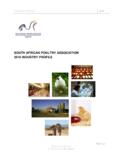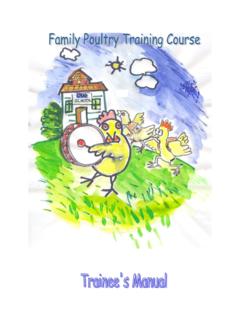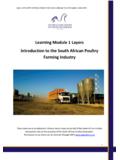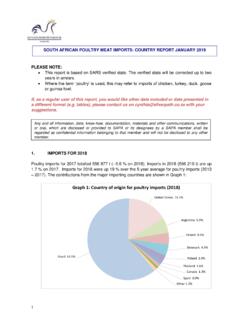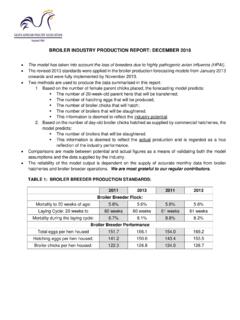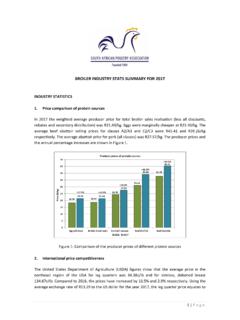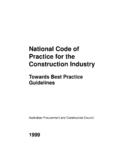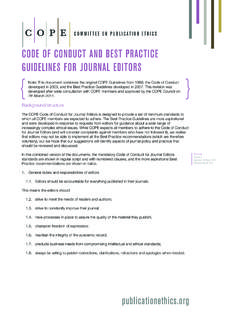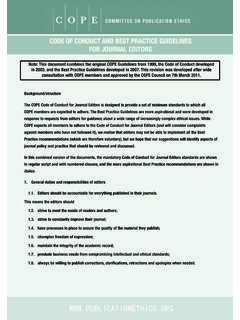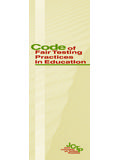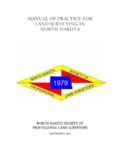Transcription of CODE OF PRACTICE 2012 Broiler Production
1 May 2012 SAPA code of PRACTICE for Broiler Production Page 1 SOUTH AFRICAN POULTRY ASSOCIATION code OF PRACTICE 2012 Broiler Production May 2012 SAPA code of PRACTICE for Broiler Production Page 2 FOREWORD This is the latest version [as per the date shown below] of the code of PRACTICE compiled by the South African Poultry Association. All members of SAPA, by agreeing to be members of SAPA, bind themselves to follow this code which, as with previous versions, is established as a minimum set of standards for local poultry Production .
2 Members are encouraged to use higher standards wherever they see fit and none of these standards trump any local laws or regulations. This code has been drawn up by the Poultry Welfare Working Group of SAPA s Technical Committee. No code such as this can be seen as a final document. As new knowledge is defined by science this code will be amended. Comments and advice from members will keep this document alive and relevant. You are all invited to comment as you see fit. The role of the poultry industry in feeding the nation is likely to grow due to the nutritious and affordable nature of our products.
3 We are duty bound to produce food safely, responsibly, and with as little harm to the environment as possible. May 2012 SAPA code of PRACTICE for Broiler Production Page 3 Index 1 Background and Introduction .. 4 2 Broiler Production Systems .. 6 Introduction .. 6 Housing of broilers in Floor Systems .. 6 Housing of broilers in Cage Systems .. 7 Free Range Broiler Production .. 7 Internal Environment .. 8 External Environment .. 9 3 Preparation of Poultry Houses .. 9 Cleaning, Disinfection and Sanitary Break.
4 9 House Preparation .. 10 Management practices in Rearing of broilers .. 10 Receiving of Chicks .. 10 Temperature Control .. 10 Ventilation Control .. 11 Light Control .. 11 Feed .. 11 Drinking Water .. 12 Supervision .. 12 Access to External Environment in Free Range Production .. 13 Transfer of Birds to Processing .. 13 Health Control .. 14 Rearing Establishment .. 14 Flock Health .. 15 Records .. 15 Vaccination .. 15 Disease monitoring and 15 Parasite, Vermin and Insect Control .. 16 Biosecurity - people.
5 16 4 Appendix 1 .. 17 5 Appendix 2 .. 21 6 Appendix 3 .. 23 May 2012 SAPA code of PRACTICE for Broiler Production Page 4 1 Background and Introduction This code of PRACTICE has been compiled by the South African Poultry Association as an objective guide for all poultry and poultry products produced in South Africa and it is an endeavor to lay down accepted norms for the poultry industry, incorporating various legal requirements where necessary and applicable. Where possible the code provides defined minimum standards for the wellbeing of poultry in commercial operations, research and educational facilities.
6 The recommendations are to be used as a guide and do not necessarily consider all possible conditions. The minimum standards outlined in this code are intended to assist producers and people involved in the care and management of poultry to adopt standards of husbandry that are acceptable in the light of current knowledge and changing attitudes. It is intended to serve as a guide for people responsible for the welfare and husbandry of domestic poultry and recognizes that the basic requirement for welfare of poultry is a husbandry system appropriate for their physiological needs.
7 The code considers safe and wholesome food for human consumption to be of the highest priority and therefore fully supports the implementation of applicable measures to comply with the requirements for safe food of poultry origin, as approved by the relevant Health Authorities and Regulations. Adequate facilities and resources must be available to supply proper housing, the supply of quality feed and water, attendance to sick and injured chickens and all else to ensure the wellbeing of the animals. Financial costs should not be a reason for neglecting of chickens that are obviously in distress or for failing to secure prompt and appropriate medical treatment or other care which may be necessary.
8 The code emphasizes that, whatever the form of husbandry, managers, employees and others responsible for the day to day needs of the stock have a responsibility to care for the birds under their control. The importance of good stockmanship in animal welfare cannot be over-emphasized. Persons responsible for the care of poultry should be well trained, experienced and dedicated. Staff should be encouraged to undertake appropriate training in poultry management and husbandry. Knowledge of the normal appearance and behavior of the birds under their control is essential for the stock to be treated effectively and efficiently and with consideration.
9 Assistance in the establishment of poultry farms and Production facilities and on the management of poultry should be obtained from qualified advisers with experience in private or government employment. Veterinary advice should also be sought when birds are in ill-health. May 2012 SAPA code of PRACTICE for Broiler Production Page 5 The code is based on practical and scientific knowledge and technology in poultry Production available at the time of publication but does not replace the need for experience and commonsense in the husbandry of domestic poultry.
10 The code does not substitute any regulatory requirements and should where applicable, be read and applied in conjunction with all relevant laws, by-laws, regulations and compulsory specifications including the following: Animal Improvement Act (Act no 62 of 1998) Animal Disease Act (Act no 35 of 1984) Animal Protection Act (Act no 71 of 1962) Meat Safety Act (Act no 40 of 2000) Agriculture Products Standards Act (Act 119 of 1990) Foodstuffs, Cosmetic and Disinfectant Act (Act 54 of 1972) National Health Act (Act 62 of 2003) Occupational and Safety Act (Act 85 of 1993) Fertilizer, Farm Feeds, Agriculture Remedies and Stock Remedies Act (Act 36 of 19947) GMO Act and Regulation (Act 36 of 1983) Livestock Brands Act (Act 25 of 1977)
